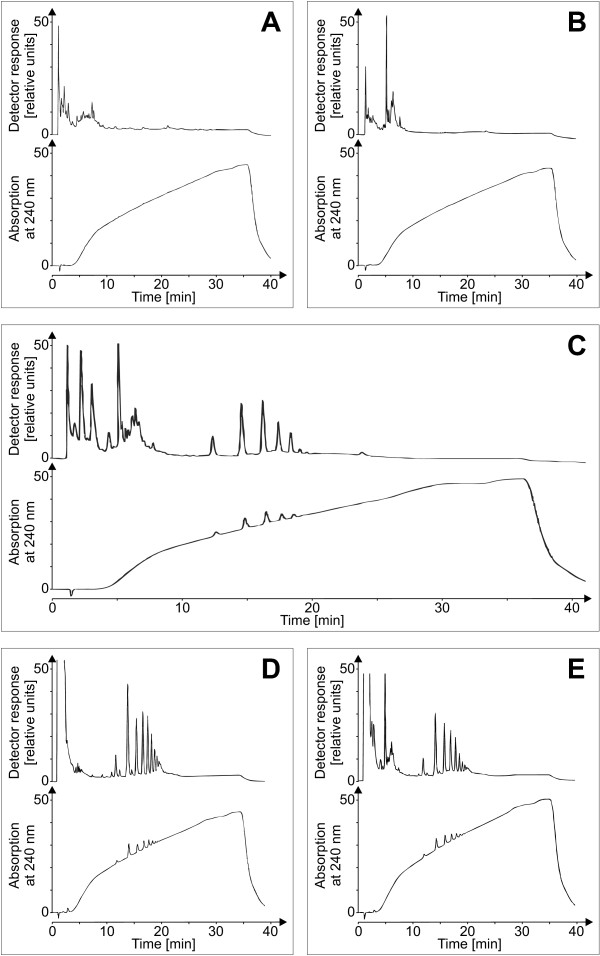Figure 7.
HPAEC characterization of the elicitor-active compound. A sodium acetate gradient ranging at 0.1 M NaOH from 0.01 M to 1 M sodium acetate with a plateau of 10 min. at a concentration of 0.7 M facilitated the identification of oligosaccharides on a CarboPac® PA-100 column with pulsed amperometric and UV-detection. Supernatants of C. annuum cell wall material (A) and an X. campestris pv. campestris culture (B) displayed no oligosaccharide signals. However, when C. annuum cell wall material was co-incubated with an X. campestris pv. campestris culture (C), characteristic peaks were detected that eluted between 10 min and 20 min. and that indicated the formation of oligosaccharides. A pectate standard of OGAs generated by digesting commercially available pectin with pectate lyase was analyzed as a control (D). The characteristic oligosaccharide peaks of both runs (C and D) were eluted at similar retention times. When the pectate standard was mixed with co-incubation supernatant, the HPAEC analysis indicated perfect overlapping of the congruent oligosaccharide peaks (E). Hence it was plausible to identify the oligosaccharides from the co-incubation of C. annuum cell wall material and X. campestris pv. campestris culture as OGAs.

